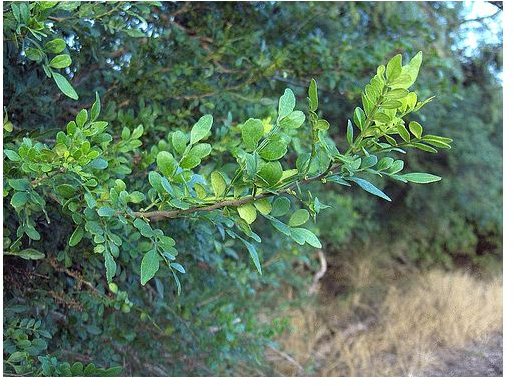Warming and Stimulating Herbs: Prickly Ash Bark Benefits
Prickly Ash
Prickly ash belongs to the Rutacea family of plants, along with rue and rose hips. It is a small shrub or tree, which grows well in shady, moderately cool areas. Historically, prickly ash, also known as the tooth ache tree, has been used as a medicinal plant by the Native Americans, who introduced the healing properties to the Europeans. They chewed the bark for tooth aches, made poultices for external pains, and drank the tea for stiff joints and muscles. The prickly ash bark benefits were also well known in China, where the plant is called chuan jiao, and the Szeuchuan pepper. It is a Traditional Chinese Medicinal herb, used for its warming properties to improve digestion and immune strength.
Both the bark and the berries possess healing properties, with the volatile oil, geraniol, alkaloids, tannins, and lignans as active compounds. The herb is a natural stimulant. It has an overall warming effect on the body, similar to cayenne and ginger. Aside from stimulating the body, the circulatory system in particular, the benefits of this herb include purifying the blood, supporting the liver, treating digestive issues, and promoting the elimination of toxins through the sweating.
Improving Circulation
One of the foundational healing uses of prickly ash bark is to improve circulation. Through increasing the flow of oxygen and nutrient-rich blood through the body, while at the same time cleansing, it is a beneficial herb for the heart and circulatory system. With the presence of a stronger flow of blood, it can improve healing, where nutrients and oxygen are needed. By removing toxins and warming, it can aid rheumatism and aching joints. It can also be used to treat varicose veins.
Holistic Cleanser
The overall impacts of this herb, stimulating tissue, promoting natural detoxification, and warming and energizing fluids and entire bodily systems, is to encourage the body to return to balance and well-being. Digestive issues, from gas to stomach pains, are relieved. Skin conditions, from acne to eczema, can improve with the elimination of toxins. Use of prickly ash bark is also good for the liver.
How to Use
To utilize the healing benefits of prickly ash bark, this herb can be taken internally, or applied externally. Both methods are effective for relieving abdominal and arthritic pain. The tea is excellent for digestive issues, for clearing up skin problems, and for strengthening the heart. To make an herbal infusion, use two teaspoons of the dried bark. Infuse for ten minutes in one cup of boiling water. Blend with dried ginger if desired.
For a poultice, prickly ash powder is the easiest to use. Make into a paste with hot water. Apply a thin layer of oil to the skin, and then apply the poultice. The warming heat of this herb will sooth painful joints and muscles, and relieve stomach cramps.
Prickly ash bark is a wonderful herb, which has been appreciated by different cultures for centuries. Although beneficial, always consult a physician before using herbs to treat medical conditions.
Resources
Hoffmann, David. “The Complete Illustrated Holistic Herbal: A Safe and Practical Guide to Making and Using Herbal Remedies.” (Element Books, 1996).
Mountain Rose Herbs https://www.mountainroseherbs.com/learn/prickly\_ash.php
Herbs2000 https://www.herbs2000.com/herbs/herbs\_prickly\_ash.htm
Photo Credit
photo by: Homered Ward Price (CC/flickr) https://www.flickr.com/photos/28340342@N08/3048721220/.
Disclaimer
Please read this disclaimer regarding the information contained within this article.
